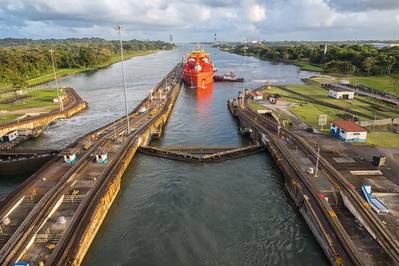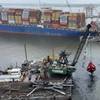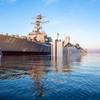Panama Canal to Increase Transit Slots as Droughts Ease
The Panama Canal expects to increase the number of daily transit slots for vessels to 36 from the current 34 beginning in September, the canal's deputy administrator said, as rains allow authorities to ease drought-imposed restrictions.
Panama experienced its third-driest year on record in 2023, lowering the canal's water level and forcingits authority to limit the number of vessels using the waterway that connects the Atlantic and Pacific Oceans.
At times, more than 100 ships at a time lined up and waited up to 21 days to use the canal, which is responsible for about 5% of global shipping.
"Now (the operation) is practically back to normal. We have 34 transits (per day) and on August 5 we will increase to 35 transits and ... in September we'll be able to increase to 36," Deputy Administrator Ilya Espino said in an interview on Monday.
"For now, we are on the right track," Espino said.
The early arrival of the rainy season in recent weeks has allowed authorities to increase the number of ships authorized to cross the canal.
"In the summer, the aim is not to have to reduce the number of transit slots, just the draft as we do every year (...) and to have normal transit activity from September," Espino added.
The Canal Authority expects this outlook to boost total revenues by 18% year-on-year to $5.6 billion during the 2024-2025 fiscal year, which begins in October, with state contributions growing 13%.
Competition?
Espino told Reuters that the canal would remain competitive even if projects aiming to connect the Atlantic and Pacific gain speed in Colombia and Mexico, projects she described as "complementary."
A transoceanic freight rail line in southern Mexico is among President Andres Manuel Lopez Obrador's signature economic development projects, while in Colombia a land corridor connecting the oceans has been debated for years.
"Here we have a very varied market, many segments that a land corridor does not have that flexibility or availability to move as many segments as we do," she added.
Espino said that the canal seeks to strengthen its operational competitiveness, although its priority is to seek new water sources.
To this end, the canal's authorities plan to build a new reservoir in six years at a cost of about $1.6 billion, which would provide the corridor with enough water to keep operating.
(Reuters - Reporting by Elida Moreno; Additional reporting by Diego Ore; Editing by Mark Porter and Nick Zieminski)














